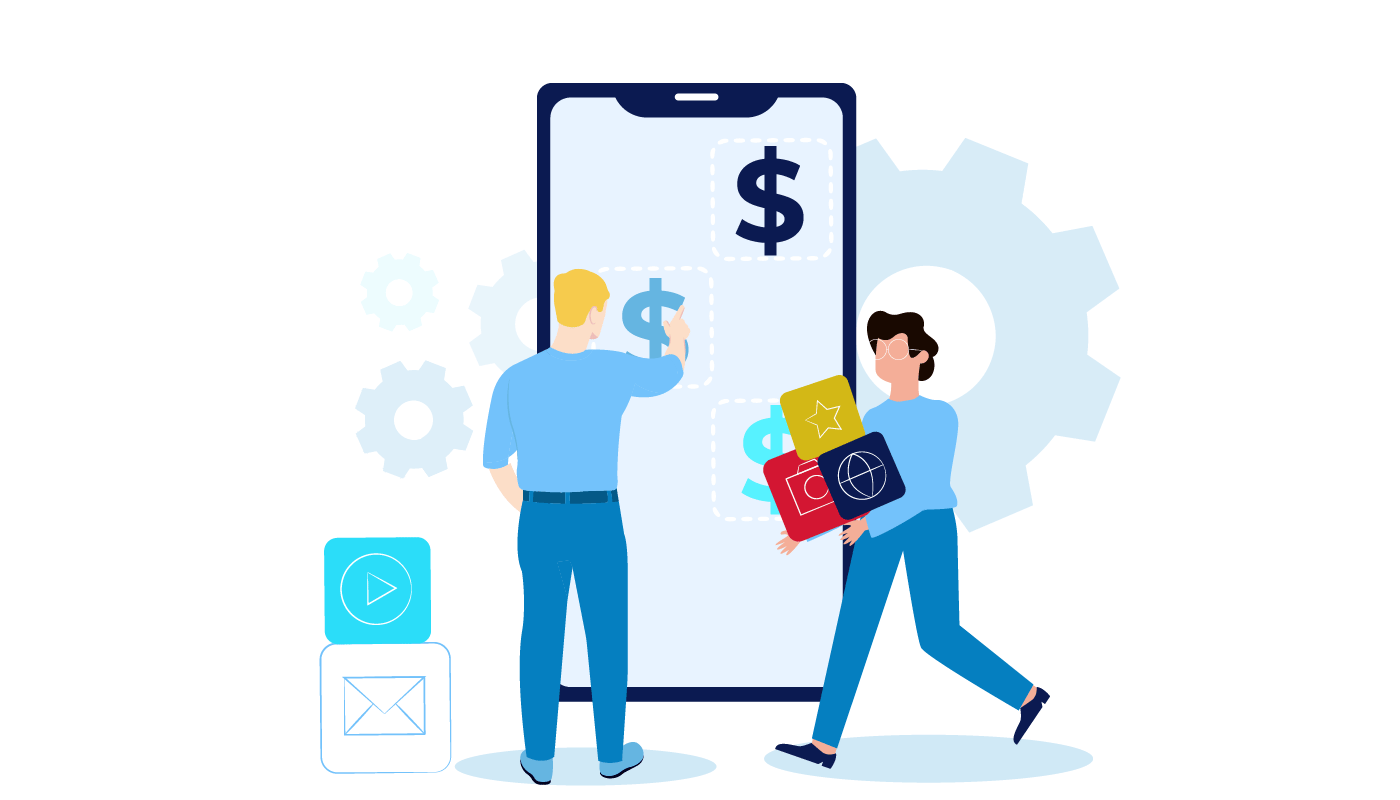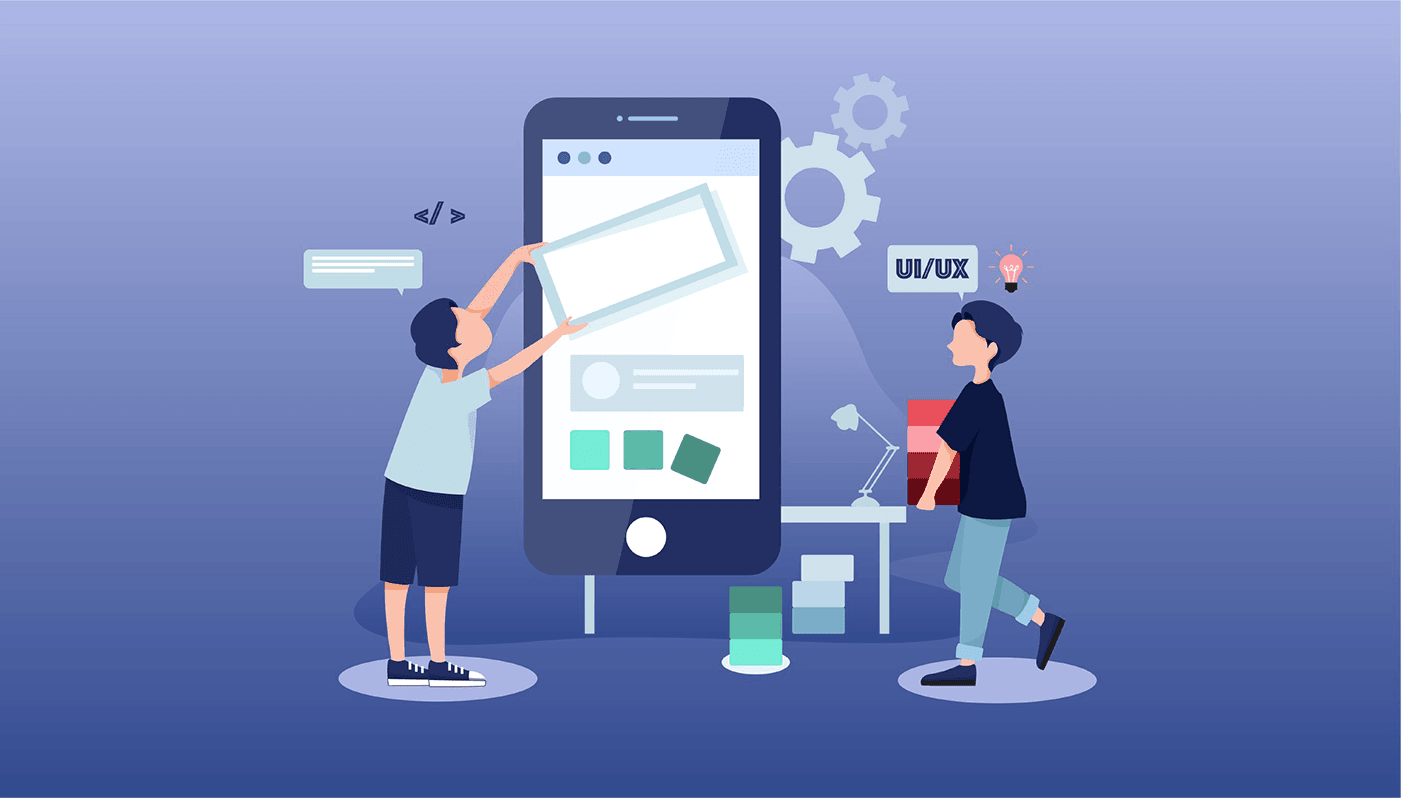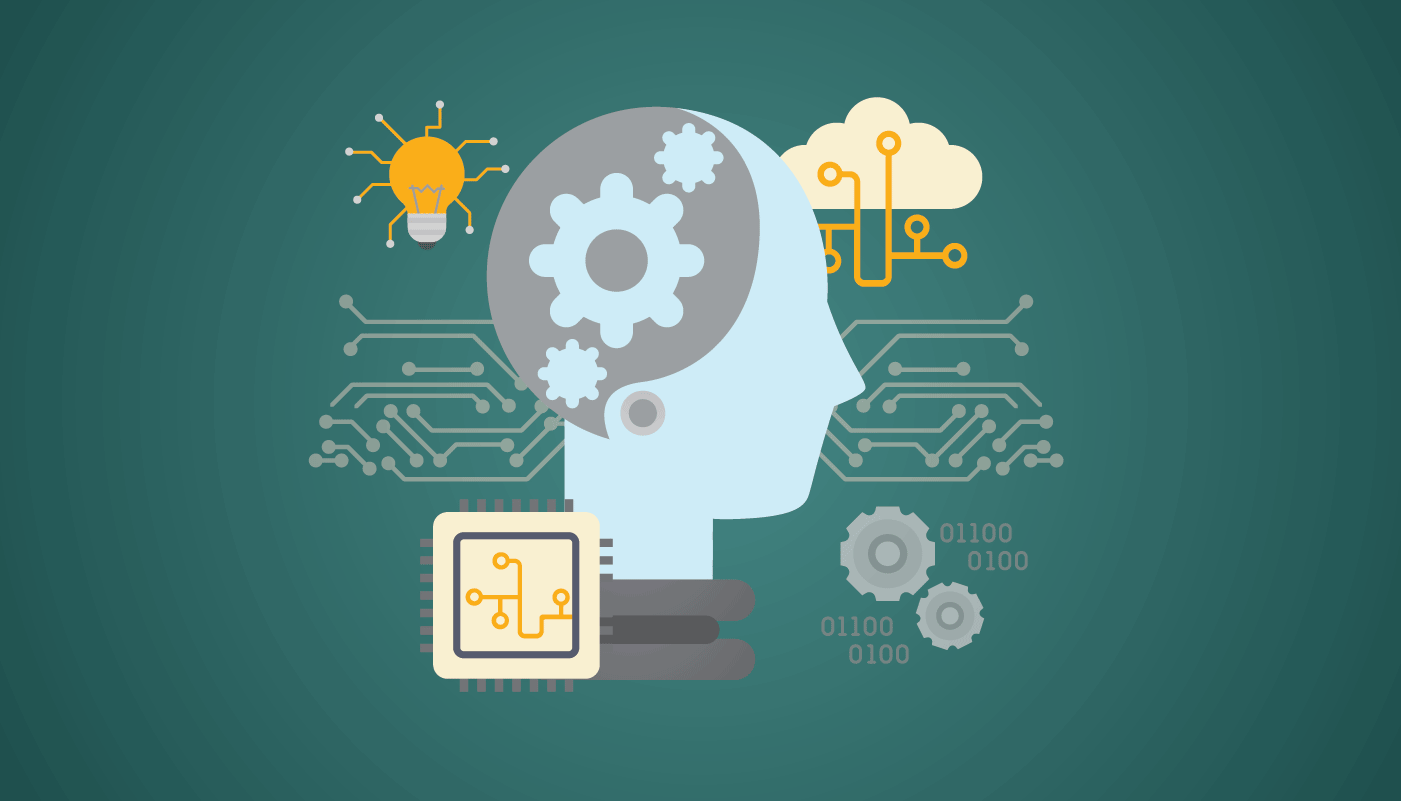For any IT organization, it’s critical to have a well-structured framework into which a variety of its processes and guidelines will fit. Such a framework applied to the software development pipeline is traditionally referred to as a life cycle, or software development cycle. There is a number of SDLC models and approaches, depending on the type of software, the type and approach of the organization, as well as other methodologies used to streamline organizational routines. Let’s focus on the essence of SDLC in more detail to clarify what it is, how it is applied, what benefits it offers to a company, and how it is implemented in practice.
1. What Is the Software Development Life Cycle?
In the broadest sense, SDLC stands for a repeatable process for creating an information system incorporating certain guidelines, methodologies, and standards. Though the concept is traditionally applied in the computer and information systems sector, it also refers to systems and software engineering. In all these areas, SDLC is understood as a framework for planning and controlling the creation of software.
The purpose of SDLC application commonly presupposes the definition of activities and stages involved in the creation of a certain software product and determination of its relationship with other organizational methodologies.
2. Software Development Life Cycle Models
Any business process needs a structure, and so does the software development process. Numerous software development life cycle models have been developed to meet the needs of this sector for a consistent, iterative process streamlining software development and giving clear assessable milestones to check the project’s progress and success. Today, eight software development life cycle methodologies are globally acclaimed and widely used across various app development companies engaged in software production. Though sharing many features, they are still a bit different from each other, mainly due to the distinctions in the software development methodologies employed by organizations.
Here is a complete software development methodologies list with a breakdown of their particularities:
1. Lean SDLC
As the lean philosophy suggests, software development processes should be streamlined with a strong emphasis on delivery speed and waste elimination. Thus, the Lean SDLC is commonly designed with efficiency in mind at every stage, including scheduling, cost, and project scope. It is one of the most suitable software development life cycle methodologies for companies with rigid hardware requirements.
2. Prototyping SDLC
This methodology is geared towards rolling out a prototype of software as soon as possible, so the stages before testing are made as short as possible to deliver a minimum viable product (MVP) to investors. After MVP testing and review, the project enters another phase of software completion based on the feedback obtained.
3. DevOps
This is the latest software development life cycle methodology, quickly gaining momentum due to its innovative approach of integrated development and operational teams. This synergy is seen as a viable way of streamlining delivery and support within the project, leading to substantial risk reduction and flexible project resourcing.
4. Waterfall SDLC
As its name suggests, this methodology is graphically presented as a cascading set of steps and actually works as a pipeline for software development. It has been repeatedly criticized for rigidity, as it does not allow the software development process to begin until clear project requirements are stipulated and the evaluation of software against initial requirements takes place only after the design stage is over. Due to such lack of flexibility, this SDLC results in a lot of waste and rework, so it is rarely used in modern IT companies.
5. V-model
This model emerged as an effort to improve the waterfall SDLC and add flexibility to it. It was praised for advanced management and control opportunities, but similar to the waterfall methodology, this one works only with strict, 100% requirements fixed at the start of the software development process, which is rarely possible in real-life settings.
6. Agile SDLC
Among all types of software development methodologies, Agile is praised for the maximum flexibility it allows. The milestones are short, 2-4 weeks maximum (referred to as “sprints”), which allows for reviewing the software increments produced within the past sprint and evaluating it on the go. The indisputable benefit of Agile SDLC is that it produces a tangible software product within each sprint, which may be shown to the client for getting feedback and amending the development process early without wasting time and resources going in the wrong direction.
7. Iterative SDLC
The iterative approach to SDLC is, in fact, an agile interpretation of the waterfall method. It breaks down the waterfall stages into small sub-stages and goes through them in a cyclical manner to minimize the time from production to testing and save resources. However, it doesn’t presuppose the active involvement of clients in the process, which distinguishes it from the Agile SDLC.
8. Spiral SDLC
Finally, the Spiral SDLC is a synergy of all mentioned SDLC approaches, as it allows incorporation of several methodologies within one development project. Teams are allowed to switch between SDLC types based on the level of project risk. The technology proved effective with projects with high levels of uncertainty and requirement variability.
3. Stages of the SDLC
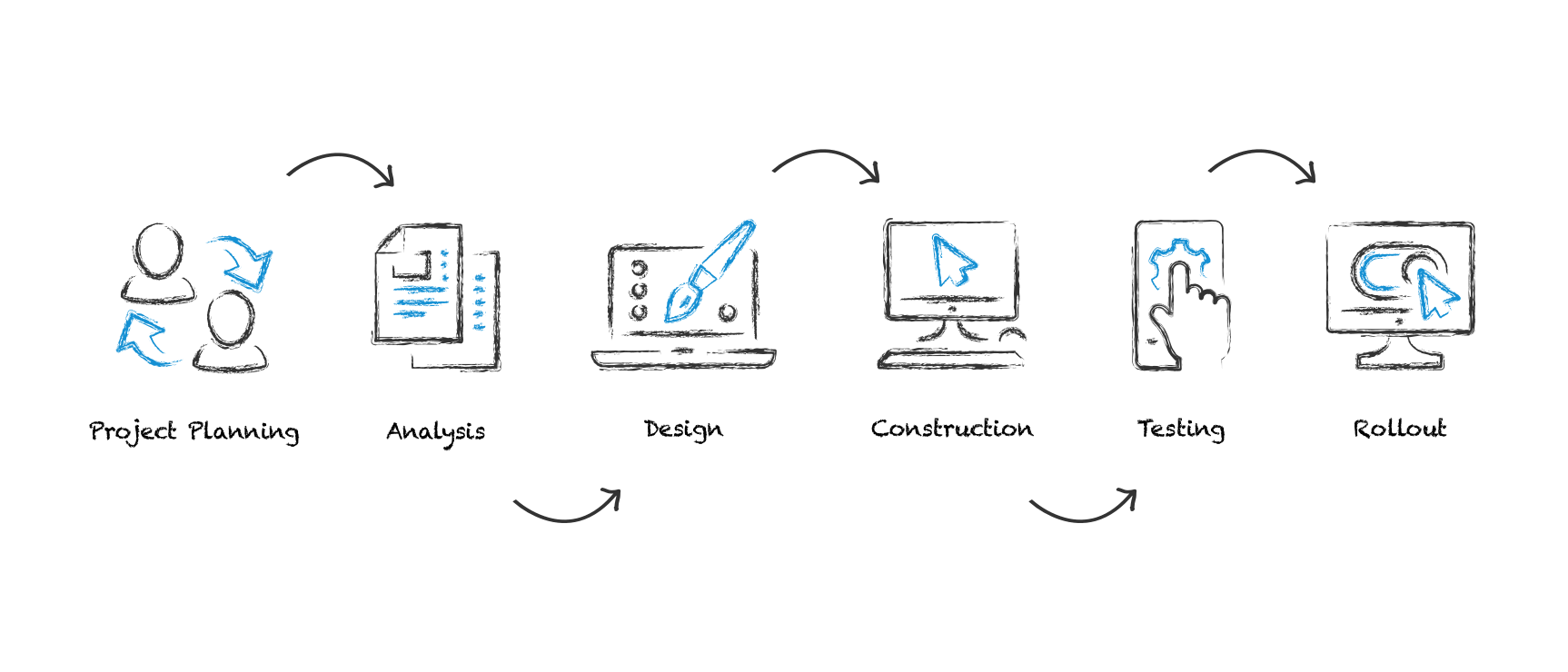
Experts distinguish six generic software development life cycle stages, which can vary a bit depending on the organization. They include:
The software development life cycle phases mentioned above are also referred to as milestones. A careful evaluation is conducted upon the completion of each milestone and strategic decisions made as to the project’s continuation. Some software development life cycle methods also include the seventh step – maintenance.
Some organizations also employ additional software development life cycle steps such as test planning and preparation, training development, and implementation planning. Since these steps are auxiliary to the main ones, they are undertaken at the same time as the generic ones.
4. Benefits of Applying SDLC
The business value of using a particular SDLC includes:
-
- meeting specific business needs within the software application development environment;
- minimizing risks associated with system development;
- eliminating redundancy;
- raising organizational efficiency;
- assisting project managers in the management of team members, development partners, and subcontractors;
- reducing the cycle time of the project’s completion via a consistent, repeatable process;
- cost reduction through minimization of rework and maintenance expenditures;
- encouraging resource reuse and redesign.
5. SDLC Diagram and Examples
Depending on the type of software development life cycle used by a particular organization, the SDLC diagram will look different. It may include 5-6 steps commonly encapsulated into an iterative cycle or represented in the form of a cascade (i.e., a waterfall).
A five-step diagram includes the circular phase sequence such as: REQUIREMENTS ANALYSIS – DESIGN – DEVELOPMENT – TESTING – DEPLOYMENT AND MAINTENANCE. A six-phase diagram may include such steps as: FORMULATION OF REQUIREMENTS – ANALYSIS – DESIGN – CODING – TESTING – DEPLOYMENT.
Here are some software development life cycle examples. The five-step SDLC looks as follows:
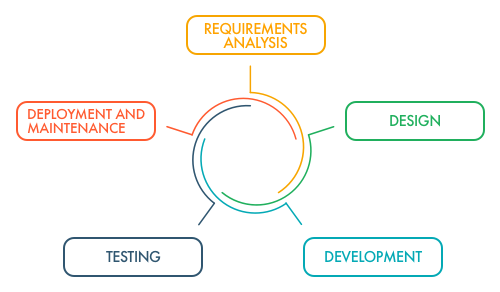
Here is the typical six-step SDLC:
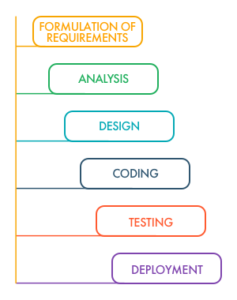
Some companies break down their SDLC into even smaller fractions and make milestones more detailed, e.g., initial idea – feasibility study – requirements analysis – systems analysis – specification – systems design – development – testing – implementation – maintenance – review.
6. Conclusion
As one can see from the overview presented, a variety of software development life cycle types exist today to aid IT companies in reducing the risk of their technology, saving time and resources, improving investment decisions, and using the best professional practices to streamline organizational processes.



